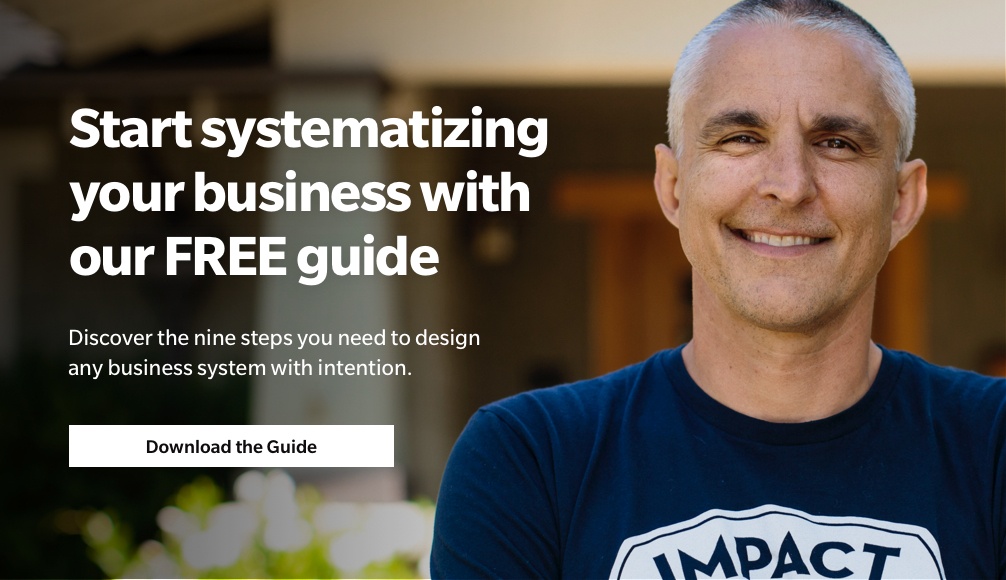Any entrepreneur who’s had to pivot their business during the pandemic can attest: Hardship breeds innovation. We’ve seen many EMyth Clients make critical creative shifts in their business or delivery model in order to meet their customers where they were—and to keep their company alive. But now that life is slowly returning to normal, many owners may get caught by marketing myopia—reflexively holding on to a short-term strategy that’s focused on the business rather than the customer.
Take for example one of the big innovations in the restaurant industry: self-managed table ordering. To reduce contact, many restaurants have traded paper menus for scannable QR codes, and in-person service for an app to place your orders and process your payment. This smart solution has ensured that both restaurant employees and customers are safe, and that business can go on. But as the model becomes less necessary, should restaurants abandon it for the old standard? And if so, when? The answer: when it’s what customers want.
What is marketing myopia?
When an innovation benefits your business in the short term, it’s easy to experience marketing myopia—that is, to focus on your products and services that work at the moment, rather than on the wants and needs of your customers. Whether it’s due to successful growth or as a reaction to crisis, marketing myopia causes you to lose sight of the bigger picture of customer experience and satisfaction in favor of immediate wins.
How to avoid marketing myopia in your business strategy
These four tips will help you create a customer-centric approach that will serve your business in the short and long term.
1. Know your buyer personas
Knowing your ideal customer is the beginning of a successful marketing strategy. Your products or services may be perfect for one type of person, inappropriate for another, and just so-so for the rest. The better you understand your target audience, the more clearly you’ll be able to think about and see things the way they do. Of course, understanding your different buyer personas is always important. But it’s especially important when dealing with unusual or unpredictable situations, from economic crisis to extreme growth. It’s in these moments when business owners tend to turn inward and think business first, customers second.
2. Validate assumptions about your customers
Probably the worst way to identify customer needs is to assume they behave as you would. Sure, you might prefer to shop online forever, or have tele-health appointments rather than sitting in the clinic waiting room—but question your own instincts. Check yourself whenever you say something like, “If I were the customer, I would want...” or, “The logical way to make a purchase decision like this is to...” Avoid the common mistake of basing marketing decisions on what customers should actually do or say. Instead, sincerely connect with them through surveys or in person. Even better, take an open-minded look at complaints from customers as an opportunity to look at your system; they’re free advice on how to improve your business.
3. Watch your competitors
Competition is a fact of life for most business owners, and it’s a more persistent stress when you’re vying for limited and selective customer attention in a shrunken market. You can choose to ignore your competitors, or you can seek to identify and analyze them in order to better understand what will attract customers to your business over theirs.
Start by determining who your main competitors are. What are the two to three companies that do the best job of attracting your target market(s)? Next, list what you believe are their major strengths and weaknesses. Then, position yourself against them to measure your competitive effectiveness.
4. Have a big-picture business strategy
It’s important to be flexible and prepared enough to pivot when you need to, but it’s just as important to think about your business plan with a long-term vision in mind. We all know of enormously successful companies that failed because they refused to pivot, believing that their hugely successful product or business model would ever need to change. So, don’t assume that what works now will continue to do so. Embrace your successes today, but stay flexible and alert to changes in the market, and create a business vision that anchors you when you need to pivot (and re-pivot).
Need more help creating a customer-oriented business strategy? We’d love to hear from you.




Comments